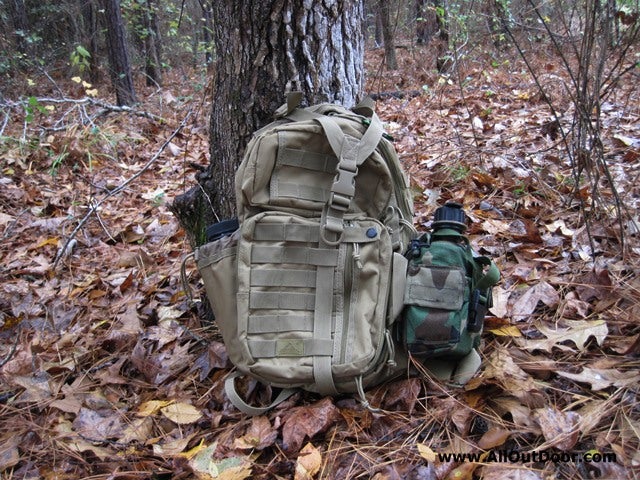Gear Sling Pack for Get Home Bag
Kevin Felts 12.01.16

How well is a gear sling pack suited for a get home bag?
In July of 2016 I went on of my hot weather hiking trips. These are usually around 10 miles or so. Due to the summer heat, this one it was cut short to around 7 or 8 miles.
The pack I took on the trip was a Red Rock Outdoor Gear Rambler Gear Sling Pack. Around the 5-6 mile mark, it felt like the pack was grinding into my shoulder. Combined with sweat, the shoulder strap rubbed my shoulder raw.
To add some padding, I took a bandana, washed the sweat out of it, folded it up, and placed it between the strap and my shoulder. The bandana helped a great deal for a couple of miles. Then came the aching. There came a point where I had to take the pack off and carry it with my right hand.
After around eight hours on the trail, I made it home. This experience forced me to rethink using a gear sling pack as a get home bag.

Get Home Bag
What is a “Get Home Bag?” The pack contains enough gear for someone to walk home in a grid down situation. This is usually a water bottle and/or canteen, water filter, snacks, rain poncho, maps, compass, battery pack to recharge a cell phone, hat, paper and pen, and contact information for friends and family members, etc.
If the grid is down, how would cell towers work? Most cell phone towers have a propane powered backup generator. When the power grid goes down, the generator turns on. So there is a chance that cell phone service would work for a short period of time.
Since the get home bag is usually left in the trunk of a car, using Meals Ready to Eat is not a wise choice. Extreme heat greatly affects MRE lifespan.
Instead of MREs, freeze dried foods and lifeboat rations are sometimes used. Lifeboat rations are designed to be stored and used on lifeboats and are U.S. Coast Guard approved. They are made from flour, corn, and corn starch, and I do not know of any that have animal products in them.
Gear Sling Pack Design
Side Slinger packs have a single shoulder strap. Some are designed to be slung over the left shoulder, some over the right shoulder, and some can be switched between shoulders.
The vast majority of gear sling packs do not have a waist belt, which means all of the pack weight is on the shoulder. After several miles the weight, numbness and rubbing raw becomes unbearable.
Get a gear sling pack that can switched from right to left. If you’re looking to carry larger loads, get one with a waist belt. Having a waist belt transfers the gear sling pack weight to the hips rather than being on the shoulders and spine.
Gear Sling for Getting Home
When putting together a get home pack, consider how far is it from your place of employment to your home. How far do you drive to do your shopping?
If the vast majority of your travels are within 20 miles of home, then have enough gear to walk 20 miles. This would be probably a two days trip. Have the gear to build an overnight shelter, make a fire, and filter water.
If you have freeze dried food in the gear sling get home bag, then include a pot to boil water. To make freeze dried food edible, you have to add boiling water to the pouch.
Let’s use an example of 1,200 cubic inches. This should provide enough room for a lightweight overnight pack, as long as the temperature is not too cold. I used to camp with a 1,200 cubic inch Jansport backpack. Instead of a tent, I would carry a hammock and rain poncho. Instead of a water filter, I would carry purification tablets and canteen.
Gear sling packs can make a good get home bag, but choose your pack and gear wisely. Once you have your pack put together, test it out. Take it on a 5, 8 or 10 mile hike and see how it does.